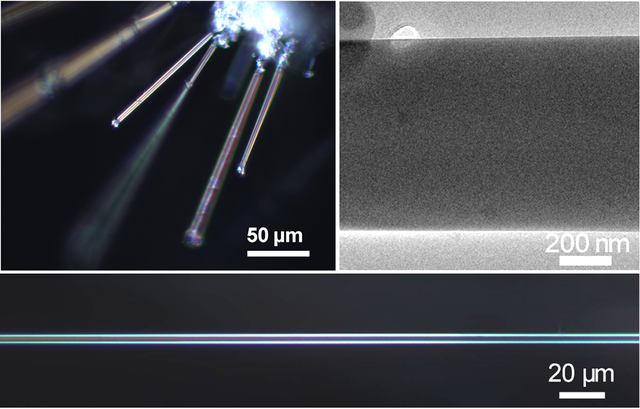On December 20, Science and Technology Daily, a national key newspaper co-founded by the Ministry of Science and Technology, the National Defense Science and Technology Commission, the Chinese Academy of Sciences, and the China Association for Science and Technology, sorted out major breakthroughs in China's science and technology in 2021. Among them, "Elastic ice microfibers" from Prof. Tong Limin's team from the College of Optical Science and Engineering(COSE) of Zhejiang University was selected as one of the top ten breakthroughs.
"Ice Fiber" comes out, flexible bending and efficient light propagating
On July 9, the results published in the authoritative academic journal— Science, showed that the team of Prof. Tong from COSE and the State Key Laboratory of Modern Optical Instruments, together with researchers from the Interdisciplinary Mechanics Center of Zhejiang University and University of California, Berkeley, USA, successfully demonstrated high-quality ice single crystal micro-nano fibers at -50℃. It can bend flexibly and transmit light with low loss, similar in performance to glass fiber.

Ice fiber with uniform radius fabricated by Prof. Tong’s group.
As a functional structure that confines and transmits light, optical fiber is one of the most effective tools for light field manipulation at present. The main component of conventional glass fiber is silica, which is one of the most abundant substances in the Earth's crust. But in fact, on the Earth and many extraterrestrial bodies, the more common material is ice or liquid water. Therefore, the fabrication of optical fibers from ice has broad application prospects.
In this project, Tong Limin's team built a growth device by themselves. Based on a large number of experiments, they improved the existing electric field-induced ice crystal fabrication method. In a low-temperature and high-voltage electric field, supplemented by a certain humidity condition, electrostatic forces were used to promote water molecules toward the direction of the electric field, which changed its disordered motion state and induced single crystal growth. Finally, ice single-crystal nanofibers with diameters ranging from 800 nanometers to 10 microns were successfully demonstrated in the environment of -50 °C. In addition, the team also used the newly invented low-temperature nano manipulation and transfer technology to obtain an elastic strain of 10.9% in the ice fiber at -150 °C, which is close to the theoretical elastic limit of ice.
Prof. Tong believes that the results of this research will expand human's cognitive boundaries of ice, inspire people to conduct research on ice-based optical fibers in optical transmission, optical sensing, ice physics, etc., as well as develop nanoscale ice-based technology suitable for special scenarios.

